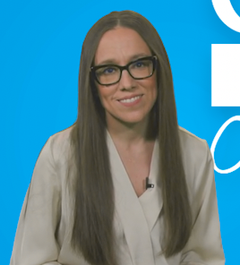
Shared Decision-Making for CLL Treatment
CLL experts offer insights on shared decision-making with patients while selecting treatments.
Episodes in this series

Transcript:
Lori A. Leslie, MD: I talked about a lot of information about BTK [Bruton tyrosine kinase] inhibitors. Sometimes I make my own head spin because I’m passionate about it and get into the weeds. How do you help our team, in speaking with the patient, how do you help them decide when we have more than one good treatment option?
Hoshiyuki Iida, APN: I would suggest that our patient finds a provider they feel comfortable with and they could relate to. It is OK to show your personality because us knowing who you are and how you react to certain things helps us guide in how we present our information to you. Secondly, always ask questions. When we see patients in our clinic, I love it when they come in with a list of questions, and we attack them one by one going down the list. I feel that we have better discussions when the patients have some background knowledge on their disease and their treatment from research on reputable websites’, such as LLS [Leukemia & Lymphoma Society], LRF [Lymphoma Research Foundation], the CLL Society.
Lori A. Leslie, MD: I agree with you. We have such a variety of patients, and some don’t know anything at all medical. That’s our average type of patient, and that’s one type of discussion. Then we’ve got other people who have printed New England Journal of Medicine and Lancet articles, and come in with 20 years of research that they want to go through line by line. I love how you always empower and encourage the patients to express where they are. We start by asking them, “What do you know so far?” We review that with them, and then take their lead in terms of, “How much information do you want about decision-making? How involved do you want to be with the decision-making?” A lot of our patients will say, “I came to you or your team, you tell me what’s the best, and I want to do that without getting confused with the details.” Others say, “Tell me all the details. I’ll take it home for a week, I’ll ask additional questions, come back with my pages of questions, and then we’ll decide together.” Expressing who you are as a person and exploring with the patient what their expectations and hopes are for starting treatment is such an important part of what we do and their journey.
Hoshiyuki Iida, APN: Our patients don’t see what you do in the background, where you look at the pathology and put all the information with the blood work together and come up with a treatment plan. It’s OK for our patients to ask why we are picking this therapy instead of another. It has happened in the past where there’s a well-meaning friend or family member who goes online and researches a drug and says, “Why isn’t your doctor prescribing this medication instead?” Instead of our patients questioning the doctor afterward, I feel like you have better buy-in from patients when we explain why we’re doing certain things, certain treatments, and then the expected goals we were trying to gain from that.
Lori A. Leslie, MD: I love that, and I love how we go through the different options and say, “These are the choices, but I think this one might be a good fit for you because of these reasons.”
Transcript edited for clarity.







